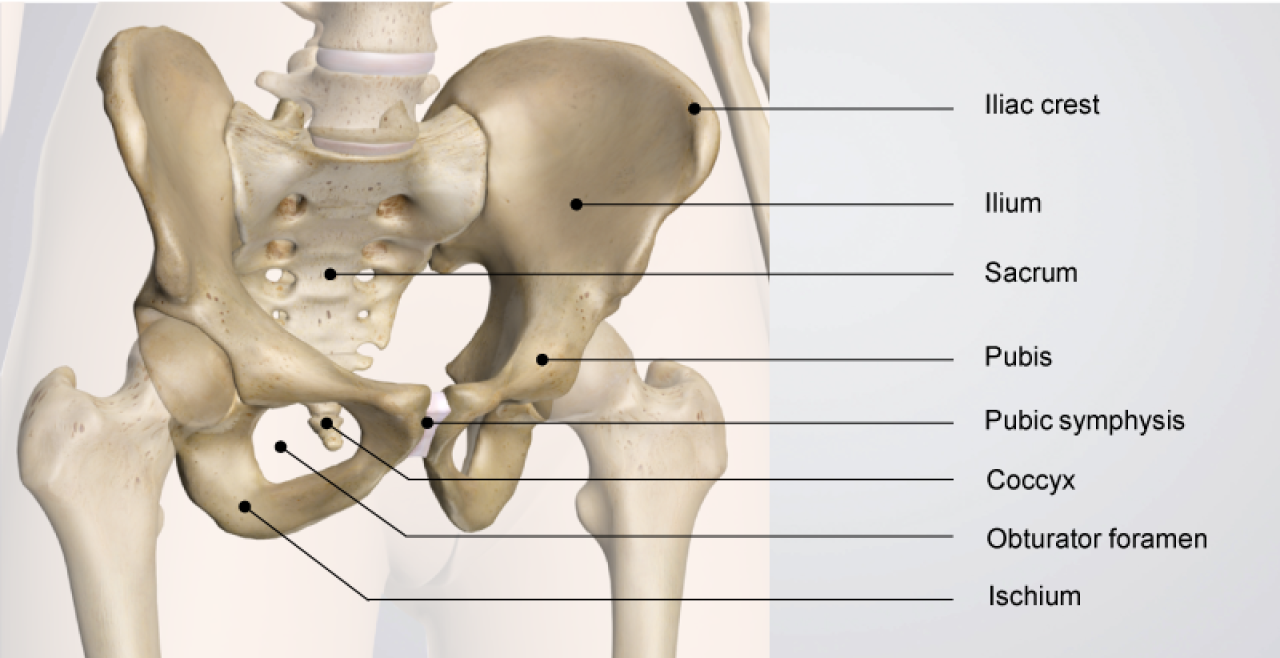Pregnancy-related Pelvic Girdle Pain (PRPGP) is a condition that causes pain in the three joints of the pelvis: the right and left sacroiliac joint and the pubic symphysis. It can affect everyone differently; the onset can be sudden or gradual. Whilst the onset is more often during pregnancy, it can start during birth or immediately after, particularly if your birth has been difficult.

“Current research shows that up to 50% of women and birthing people experience pelvic girdle pain during and/or after their pregnancy.”
(The Pelvic Partnership 2023)
The cause of pregnancy related pelvic girdle pain
It is believed to be a biomechanical condition caused by stiff or misaligned joints in your pelvis. New thinking is emerging that suggests it may have biopsychosocial roots as pain and emotion are intrinsically linked.
Pregnancy Myths
Previous thinking was that the hormone ‘relaxin’ affected the ligaments and joints connecting the three pelvis joints – this is not true!
The amount of relaxin in your body postnatally is negligible, but you can still experience PRPGP.
Symptoms of pregnancy related pelvic girdle pain
Pain/discomfort felt over the front, back or sides of the pelvis
Difficulty walking
Pain when standing on one leg, e.g., getting dressed, getting in/out of the bed, or bathing.
Pain and/or difficulty moving legs apart, e.g. getting in/out of the car
Clicking or grinding in your pelvis
Limited or painful hip movements, e.g. turning over in bed
Pain doing normal, day-to-day activities
People experience different severities of symptoms, from mild discomfort to completely debilitating pain. The sooner you are able to be assessed, the better the condition can be managed.
There are numerous risk factors that make you more likely to experience PRPGP.
History of low back pain or non-pregnancy-related PGP
Previous trauma to your pelvis
Being overweight
Smoking
Depression and anxiety
Hypermobility / Ehlers-Danlos syndrome
Management of pregnancy related pelvic girdle pain
Speak to your midwife or GP and request a physiotherapy referral
Self-refer to a private physiotherapist, osteopath or chiropractor (ensure they have the training to support you)
Regular pain relief, e.g. paracetamol
Manual therapy, e.g. massage
Hydrotherapy
Acupuncture
Use of an effective maternity support belt
Further self-help for pregnancy related pelvic girdle pain
Move; it may be tempting to stay still but focus on movement that doesn’t cause you pain and change position regularly.
Sleep with a pillow between your legs that supports both your knees and ankles
Sit on a birth ball, make sure that it is big enough that your knees are lower than your hips and move your pelvis rather than bouncing!
Sit on a plastic bag in the car, to ease getting in and out of the car
Be conscious of your posture